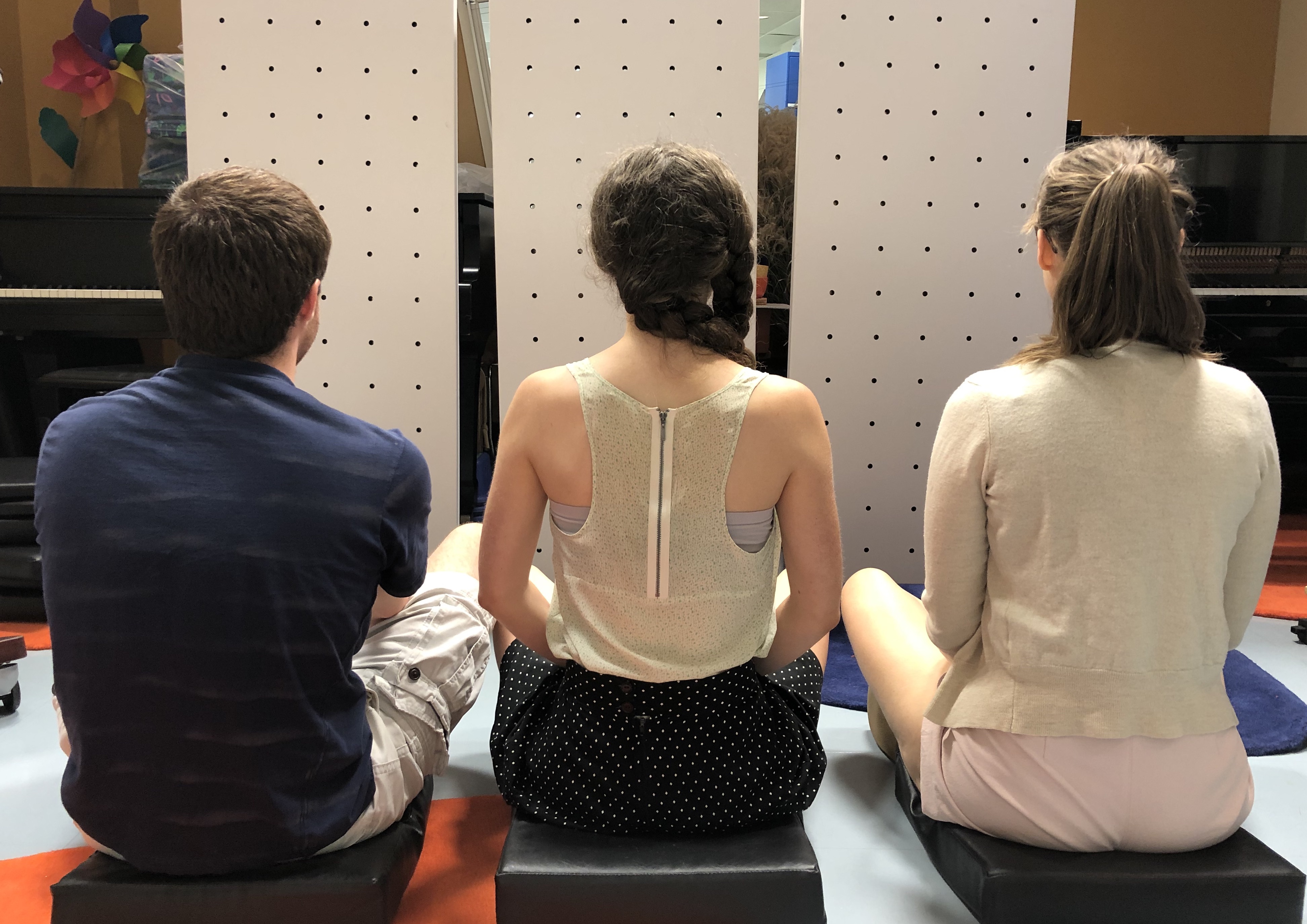


We conduct research on musicians’ wellness in conjunction with the Piano Pedagogy Research Laboratory at the University of Ottawa. Our wellness research program focuses on the impact that various treatments (physiotherapy, somatic approaches, mindfulness training, yoga practice, etc.) can have on musicians. More specifically, we want to investigate how these treatments can increase musicians’ mental and physical comfort and possibly improve the quality of their performance. While there is a great deal of subjective evidence suggesting that these practices are beneficial to musicians, there is a lack of objective data confirming these reports. In order to address this lack of research, the centre studies how these treatments can increase musicians’ mental and physical comfort and possibly improve the quality of their performance. Also, music wellness research is faced with the troubling problem of determining what is meant by “improvement” or “optimal” criteria. Our research investigates whether musical (expression, musicality), mechanical (low forces, stiffness, high speed) and biological (reduced injury risk, low co-contraction) criteria are compatible, and whether it is possible to approach music making in a way that simultaneously achieves all three.



Through our research, we aim to:
Our research team includes professors, students, and health professionals from the following disciplines:
Music
Health Sciences
Psychology
Engineering
Human Kinetics
Audiology
For more information on wellness research: please visit the Piano
Pedagogy Research Laboratory
Many research studies have documented the prevalence of Musicians’ Performance Anxiety (MPA). The symptoms of MPA include both mental and physical elements, and can have a severe impact on musicians’ well-being and ability to perform at a high level. Due to the seriousness of this problem, many music teachers and students are voicing the need for better strategies to cope with MPA. In order to fill this need, more research is required to better understand MPA, as well as the strategies that can help struggling musicians. Our research focuses on examining the effectiveness of strategies such as self-modelling and mindfulness. A better understanding of how strategies can impact musicians’ psychological experience of MPA as well as its physical symptoms can help performers, educators, and practitioners better deal with these challenges in their work.

Somatic retraining methods such as Alexander Technique, Feldenkrais Method, and Body Mapping are becoming increasingly popular among musicians. Although much of the theoretical foundations of these methods are based on scientific understanding of anatomy, motor control, neuroplasticity, and motor-learning, our understanding of any positive benefits of somatic training is almost entirely theoretical or anecdotal. Because the current amount of scientific research on the impacts of somatic training is very small, further investigation is needed. Our research on somatic methods aims at examining the effects of somatic training on posture and movement of musicians performing on their instrument and the musical quality of a performance. It also examines how individual somatic approaches differ in their impact on musicians, and whether or not those impacts occur over short term and long term interventions. This research could give an empirical basis upon which to understand the usefulness of somatic treatments in helping musicians. In addition to our work on somatic methods, we have also established a partnership with Dr. Outerbridge’s clinic to monitor the progress of various clinical treatments on injured musicians.
Playing a musical instrument is a highly complex biomechanical task. While there are many approaches aiming to promote efficiency and injury prevention, pedagogues often disagree on the specifics of what is “healthy technique.” These disagreements are often based on imprecise terminology and subjective results, creating a great deal of confusion for musicians who are seeking answers to their technical and physical wellness needs. Therefore, objective data is required to better understand the biomechanics of musical performance and injury prevention. Our research uses quantitative tools to learn more about muscle use, the positions required for playing musical instruments, as well as the impact of injury prevention and treatment strategies. We also use qualitative research in order to examine popular pedagogical approaches and prevention strategies in relation to scientific findings. This research can help improve musicians’ wellness by furthering our understanding of instrumental technique, pedagogy, and injury prevention strategies so that musicians can apply this knowledge to their own playing.

Most professional musicians depend on maintaining good auditory health to be successful
in their occupation. Hearing loss can threaten a musician’s ability to perform well, and a number of studies have concluded
that musicians are at risk for hearing loss due to the potentially harmful levels of sound exposure in their working
environment. Research indicates that musicians might not be sufficiently aware of their hearing health until they experience
symptoms, and therefore they are not likely to get hearing protection until damage has already occurred. Our research on
auditory wellness aims to better understand the risk of hearing loss caused by music making, as well test diagnostic
methods that may be able to detect problems earlier and point musicians towards proper treatment and preventative care.
Visual problems can also impact musicians’ ability to perform well. While issues with visual focus can make it difficult
for musicians to read in different performance contexts (on stage, in halls with poor lighting, etc.), beginner musicians
may also struggle to learn to read (a condition called “dysmusia”) due to visual difficulties. It is possible that one
cause of dysmusia could be a problem of coordination between the two eyes (known as “binocular coordination”).
Our research on visual wellness investigates if there is an observable relationship between issues with binocular
coordination and dysmusia that may have an impact on musicians who are learning to read.